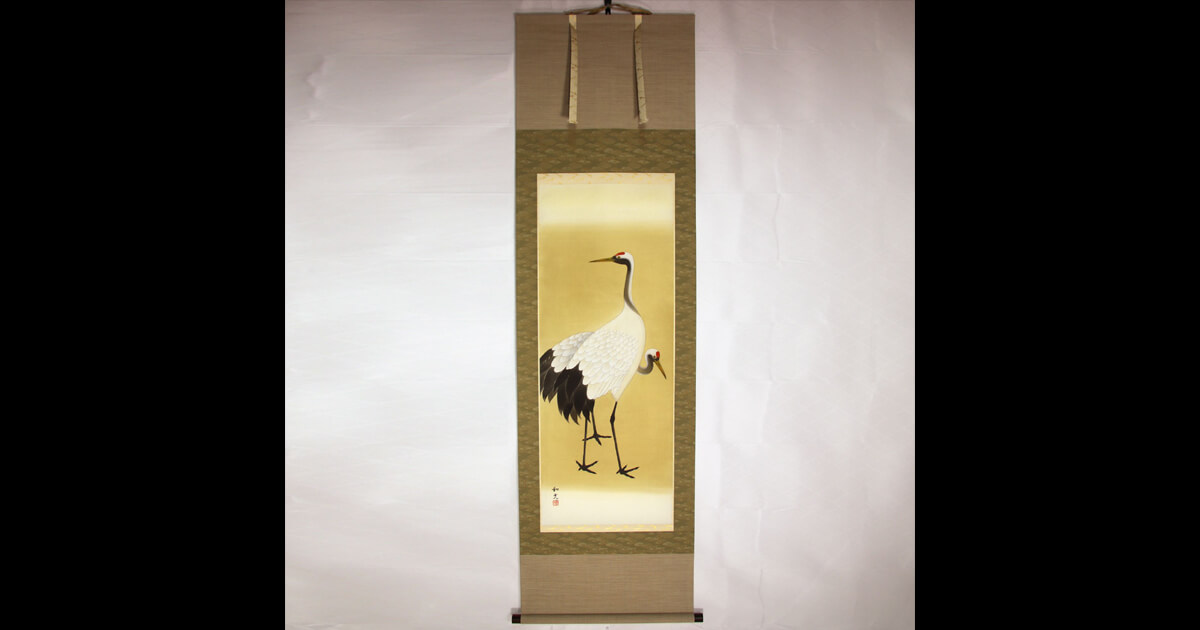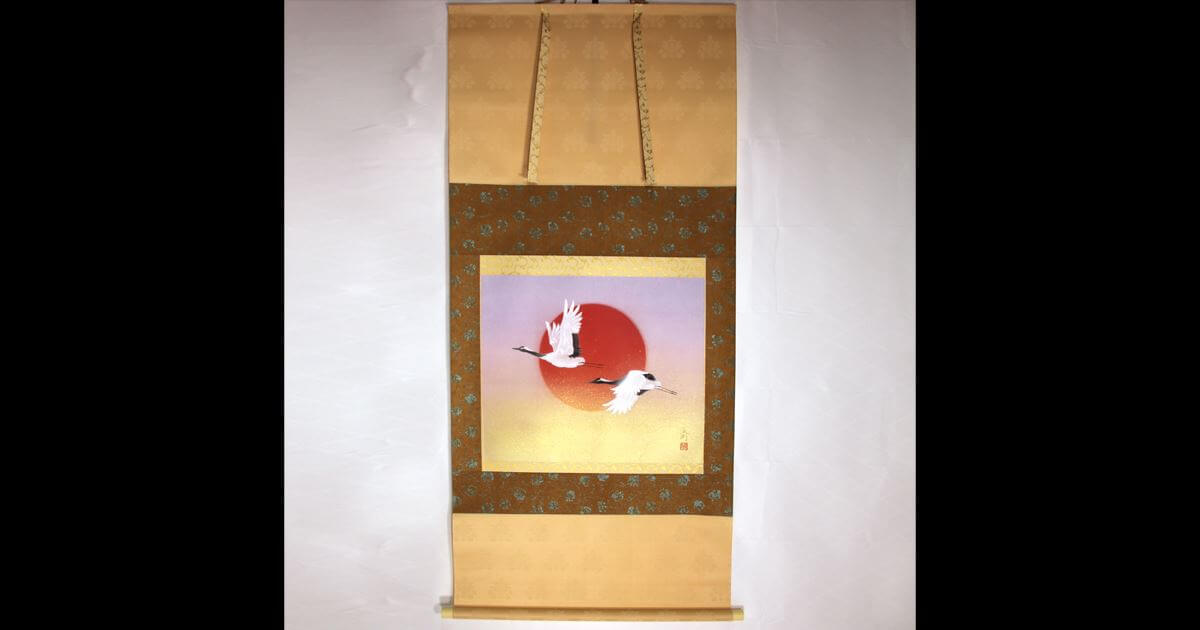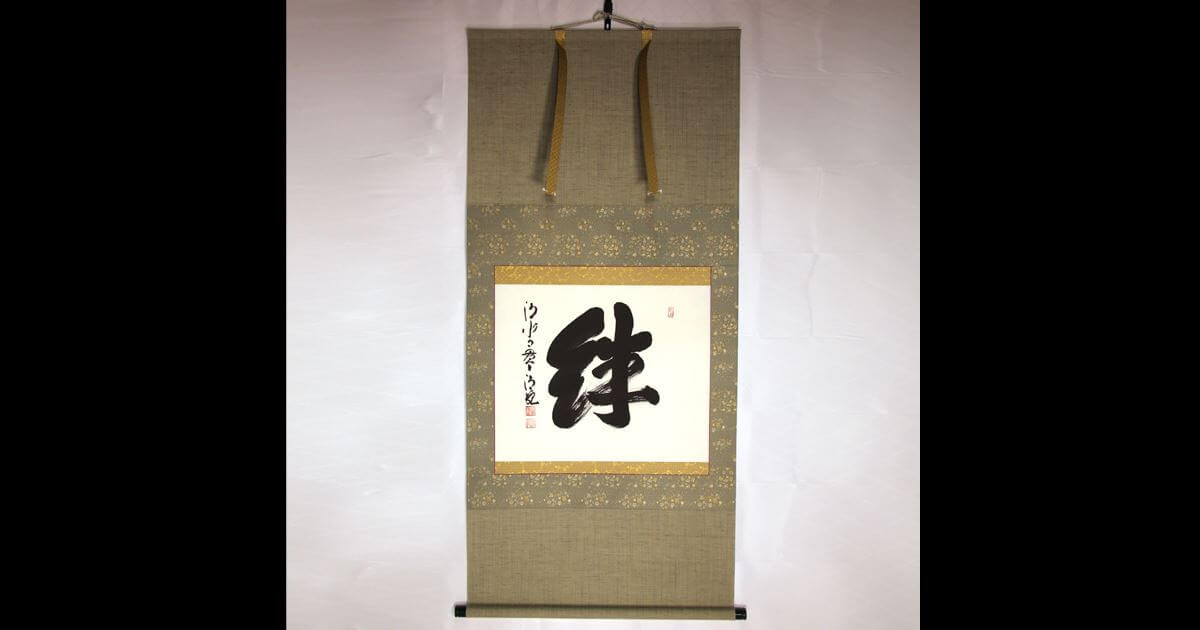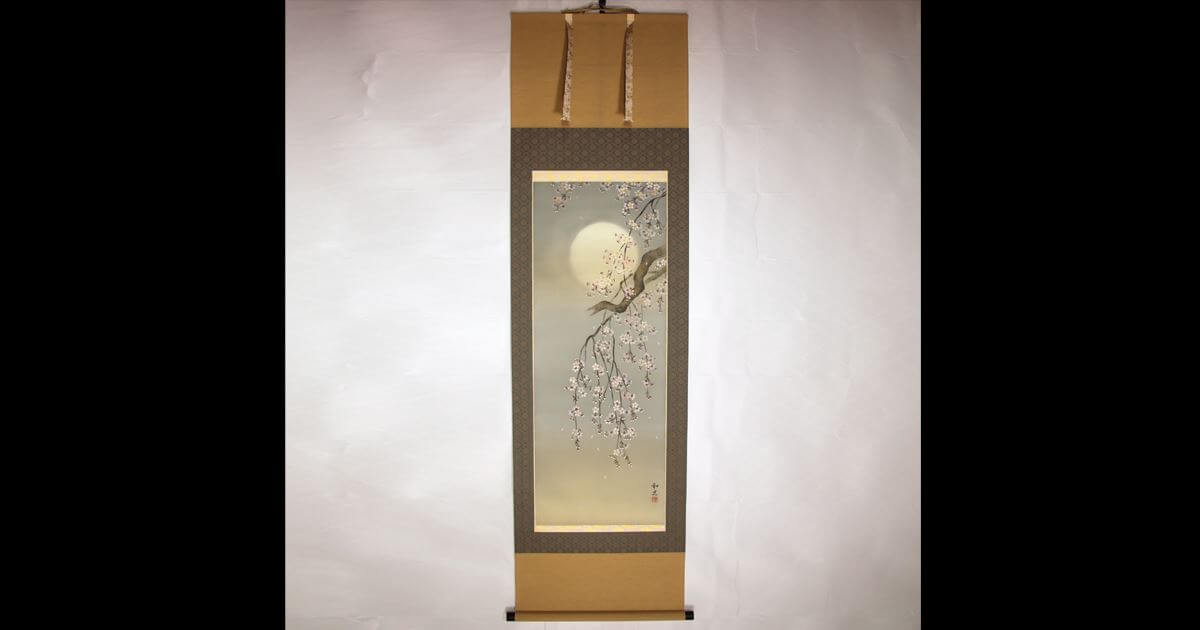Fresh Arrivals | Kakejiku | 20180311
Contents
- 1 Kakejiku | A Pair of Cranes / Wakou Miyake – Soukaku
- 2 Kakejiku | A Flying Crane Couple / Tatsurou Shima – Zuishou
- 3 Kakejiku | A Pair of Cranes / Eiin Yasuda & Katsunobu Kawahito – Soukaku -Zuiki Douni Mitsu-
- 4 Kakejiku | Kizuna / Seihan Mori – Ties, Bonds
- 5 Kakejiku | Illuminated Cherry Blossoms at Night / Wakou Miyake – Yozakura
Kakejiku | A Pair of Cranes / Wakou Miyake – Soukaku
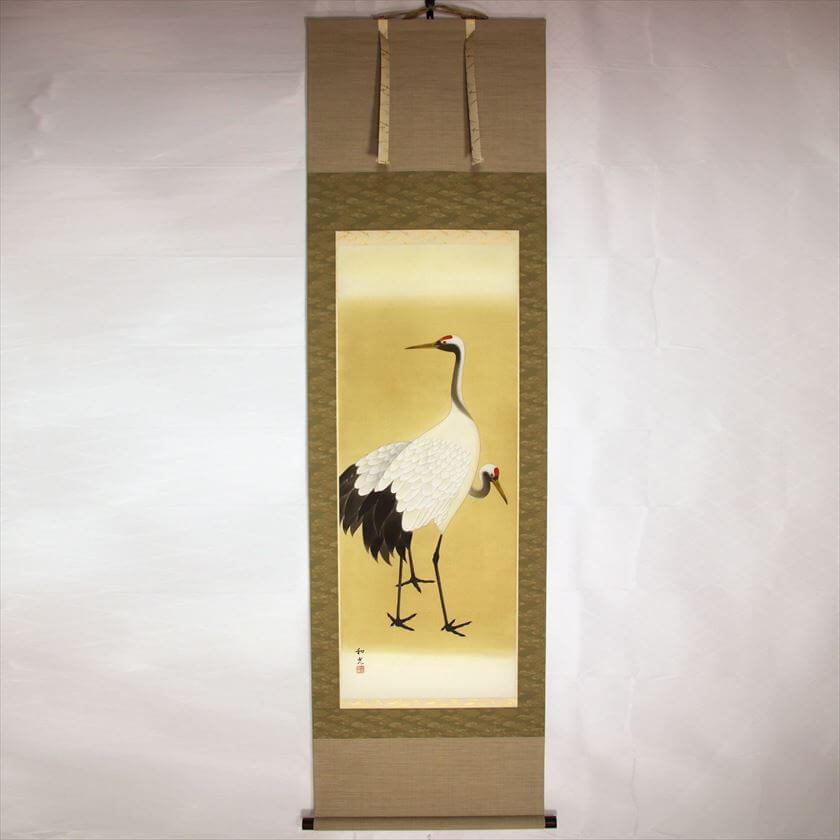
A pair of cranes is boldly depicted in the center. We feel conjugal love and friendship of spouse by their adorable faces. Even though there is no depiction besides a pair of cranes, gold paint on the back produces profound atmosphere. The gold on the back naturally attracts our attention to subject of this artwork, cranes. This is a great work of Wakou Miyake in which he demonstrated extraordinary artistic talent in the field of bird and flowers.
Kakejiku | A Flying Crane Couple / Tatsurou Shima – Zuishou
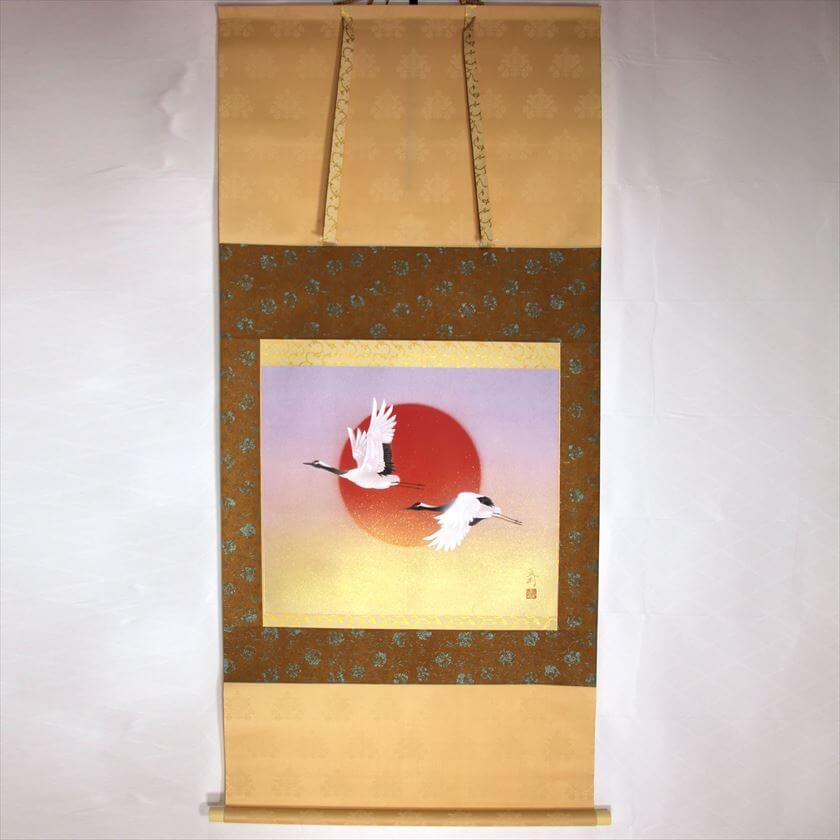
A flying crane couple is brightly depicted in front of sunrise. Gold in the foreground is like a dazzling sunshine and make us feel the flying couple more energetic and lively. Like this artwork, “vivid color” could be pointed out as a common feature of Tatsurou’s works. What is striking beautiful is bird’s feathers. They are depicted with “gofun” Japanese white pigment and look sophisticated. Some feathers are almost transparent and some are dense. It is interesting and fun to take a closer look at each feather.
Kakejiku | A Pair of Cranes / Eiin Yasuda & Katsunobu Kawahito – Soukaku -Zuiki Douni Mitsu-
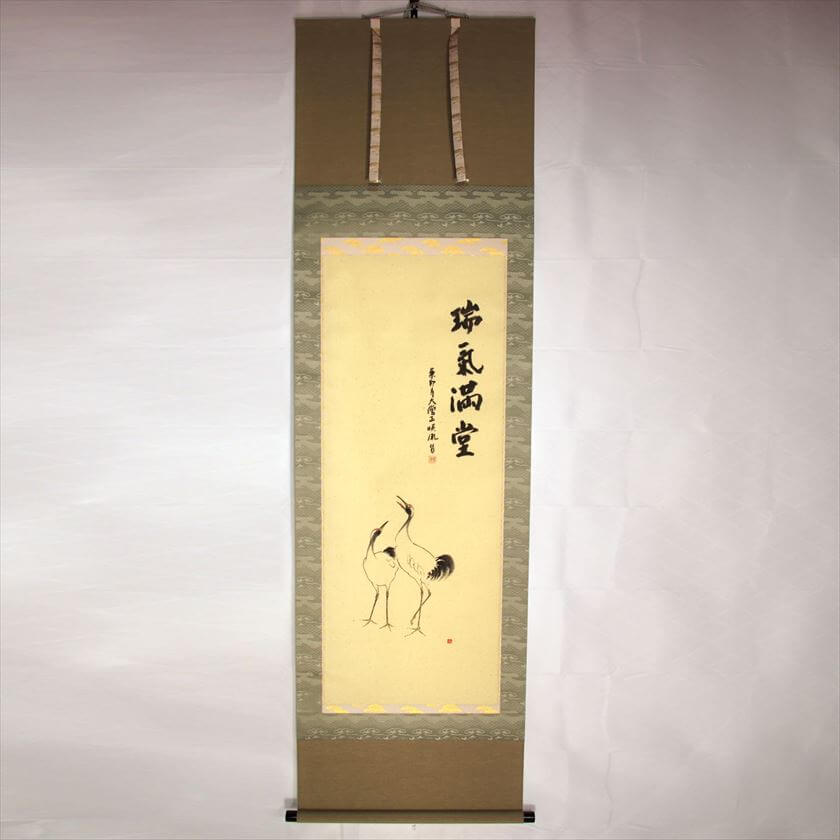
Eiin Yasuda, a former chief priest and now doyen of Yakushiji temple in Nara, established “Yakushiji 21st century Mahoroba academy” in 2004 in the hope of conveying the importance of an old Japanese virtue that is to foster spiritual affluence rather than material affluence. He traveled around to give talks about his academy. Katsunobu Kawahito, a Japanese-style painter, was deeply impressed with Eiin’s dedication to Mahoroba academy and wanted to take part in it through his painting. This is how this collaboration realized.
Calligraphy is by Eiin Yasuda. “瑞気満堂 Zuiki-dou-ni-mitsu” is a lucky word that means an auspicious atmosphere fills the room/house. Simple and rustic writing indicates Eiin’s personality. There are no airs and graces about him. That is why people love him.
The painting was done by Katsunobu Kawahito. What is great about Katsunobu is that he captures the essence of subject with less brush strokes. In this artwork, he expressed cranes’ feathers by not depicting them. Instead, he made use of Japanese rice paper. He succeeded in making us imagine and enjoy the feathers. This is one of Katsunobu’s techniques to make us feel Yuugen.
At first sight, you may feel there are too many unpainted spaces. However, calligraphy by Eiin adds solemn and sacred atmosphere to the painting and the painting feels graceful.
Kakejiku | Kizuna / Seihan Mori – Ties, Bonds
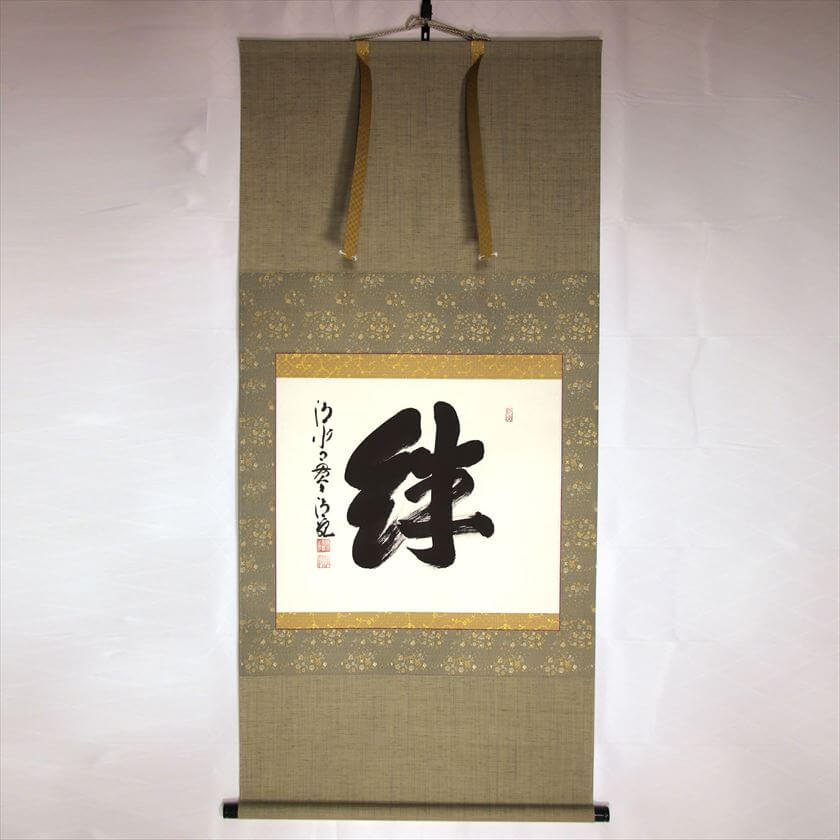
Since 1995, the “Kanji of the Year,” has been announced every December 12th at the Kiyomizu-dera Temple. One Chinese character, representing the social conditions of that year, is chosen by the Japan Kanji Aptitude Testing Foundation and celebrated as “the day for Kanji.” At the time of the announcement, the Chinese character is brushed on a large sheet of Japanese writing paper by the chief priest of the Kiyomizu-dera Temple upon the “Oku no in” (inner sanctuary) stage.
Seihan Mori, the chief abbot of the Kiyomizu-dera Temple, is known for writing the “Kanji of the Year” every year. Therefore, he is known as a “nōshoka” (master of calligraphy), probably the best-known calligrapher in Japan. Thus, his pieces of calligraphy are very popular.
The character of “kizuna” (ties) was chosen as the Kanji of the Year 2011. We realized once again the ties with people who are close to us like our family and friends through experience of the Great East Japan Earthquake, so this character was chosen. This character is especially loved among a series of the Kanji of the Year characters, and a calligraphic work of the kizuna character is one of the most famous and popular one out of Seihan’s works. His writing is so neat and there is beautiful consistency, yet powerful.
Kakejiku | Illuminated Cherry Blossoms at Night / Wakou Miyake – Yozakura
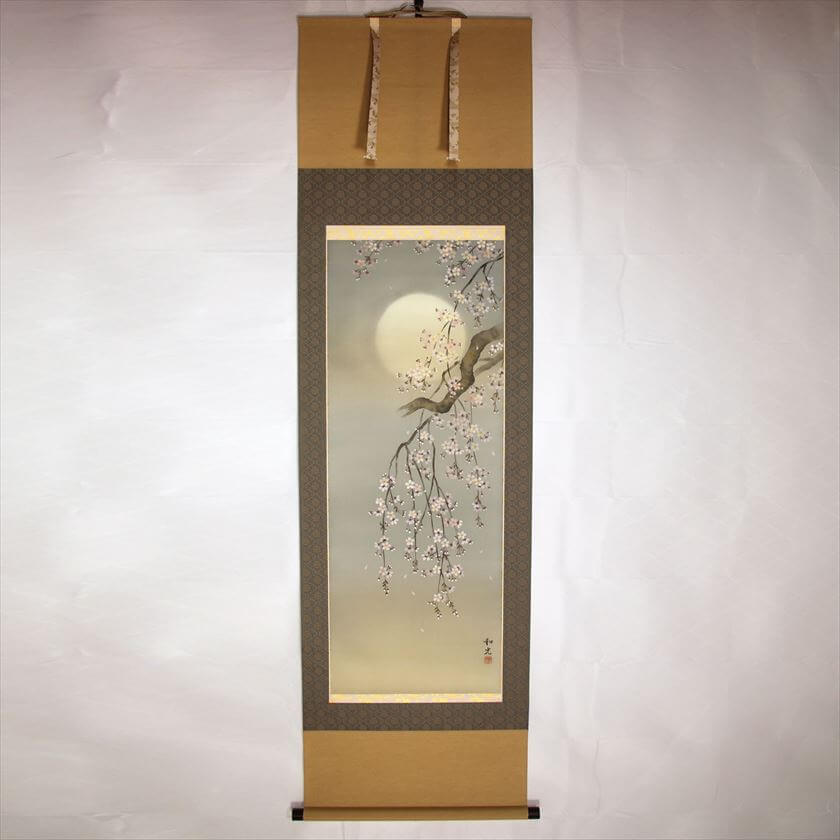
Japanese people love viewing cherry blossoms. Illuminated cherry blossoms at night are fascinating beyond words. The moment the cherries in both full bloom and out of bloom had been regarded as precious and irreplaceable. Cherries only last for a time but their transient beauty is so captivating to Japanese.
Wakou depicted each petal’s color and shape very well. Thin black sumi ink on the background tells us it is at night and accentuates the beauty of the moon. The depiction of falling petals provides sense of lively motion and makes us feel cherry blossoms are having the time of their lives. Techniques of Wakou can be seen everywhere.

